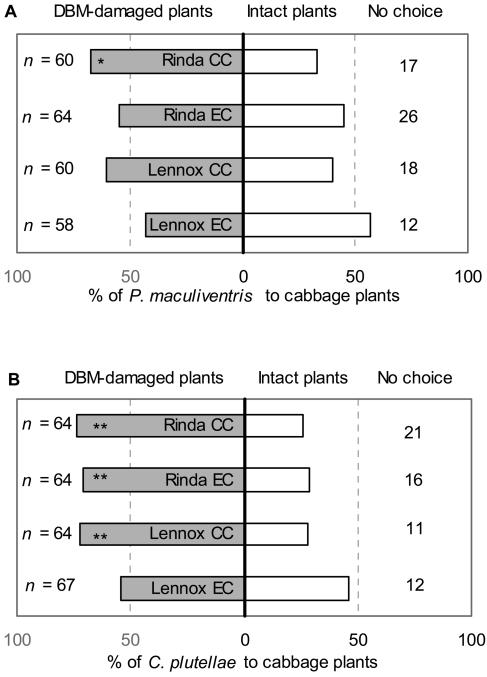Figure 4.
The orientation behavior of P. maculiventris and C. plutellae. The percentage of A, P. maculiventis in experiment 1 and B, C. plutellae in experiment 2 choosing for P. xylostella-damaged or intact control cabbage (cvs Rinda and Lennox) plants grown at ambient (CC) or elevated CO2 (EC) in the Y-tube olfactometer. Asterisks indicate significant (*P < 0.05, **P < 0.01, in binomial test) preference toward either odor source. n indicates the total number of predators or parasitoids used in the assay including the individuals that did not show any preference for either odor source. DBM, diamondback moth, P. xylostella.

